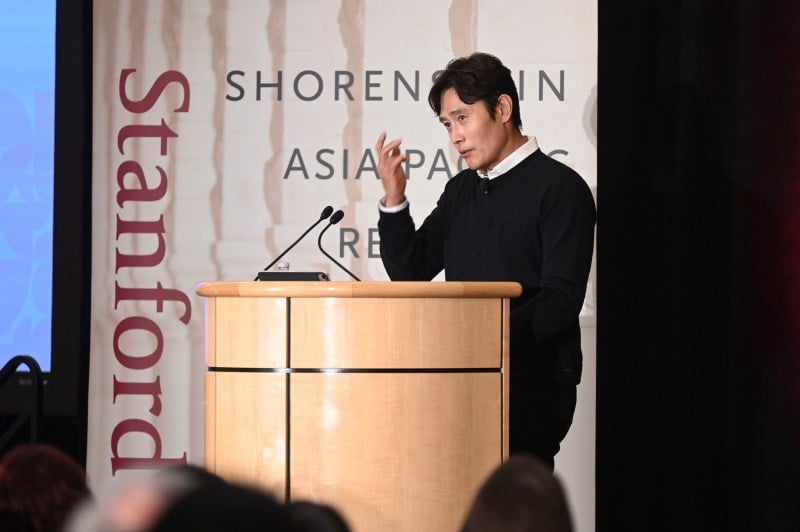Rohan Chowdhury ’26 originally planned on fulfilling his language requirement with classes on Bengali, a language spoken by almost 300 million people worldwide. Upon finding the absence of his family’s mother tongue in Stanford’s course catalog, he was excited to hear that students had the ability to request language programs through a Google Form. Unfortunately, Chowdury’s request was quickly rejected with the University telling him that there were not enough “resources” or “interest.” The Stanford sophomore decided to fulfill the requirement with Mandarin instead, a program held under Stanford’s robust Department of East Asian Languages and Cultures.
An academic department isn’t the only place students can engage with Mandarin or East Asia. The Walter H. Shorenstein Asia-Pacific Center (APARC) unveiled the Taiwan Program, a “research and education hub on contemporary Taiwan,” earlier this year. As Stanford’s hub for “interdisciplinary research, education and engagement on contemporary Asia,” the APARC represents the institution’s broader interests, work and publications in relation to the Asia-Pacific. However, while the center supposedly represents the entire region, the only countries with specific programs within the APARC are China, Japan, Korea and now Taiwan.
Naturally, the APARC is not the only space for Stanford affiliates to engage with Asia. The East Asia Library holds an extensive collection of Chinese, Japanese and Korean collections first gathered by the Hoover Institution in 1945. Students can also take Stanford-taught languages courses in Cantonese, Japanese, Korean, Modern Chinese, Taiwanese (Southern Min), Arabic, Turkish and Persian. Other Asian languages such as Filipino are taught under the Special Language Program (SLP) with outsourced non-Stanford lecturers teaching the courses over zoom.
Additionally, the University’s only graduate programs focusing on the Asia-Pacific are in East Asian studies, Japanese and Chinese. Undergraduates can major in East Asian studies, China studies, Japanese and Korean. The Center for Russian, East European and Eurasian studies (CREEES) also offers courses and conducts research on Central Asia, but these programs are limited to nonexistent depending on the academic year.
In fact, if I were to walk into Encina Hall not knowing a thing about the world, I would come out thinking that Asia solely consisted of four countries. Who would’ve thought that region actually included 48 nations with diverse populations, cultures and societies?
Unfortunately, many of my other Asian or Asian diaspora peers have found even less representation within this institution. Taking a look at the data from the ExploreCourses catalog from the last five academic years, East Asia dominates Stanford’s courses on Asia.

As an Asian American, I appreciate the robust programs that this institution leads and am happy that continual efforts have been made to expand them. However, one thing is clear about Stanford’s programs focused on Asia: There is a heavy emphasis on East Asia that leaves the rest of the continent’s regions under the academic radar.
More specifically, as a Pilipino American, I am happy to see that the University has at least given us Filipino language courses (outsourced to Berkeley faculty over Zoom) and a broader Southeast Asia Program under the Walter H. Shorenstein Asia-Pacific Research Center (named after the man who contributed to the destruction of San Francisco’s historic Pilipino community).
However, more robust (in-person) language programs could garner more student interest in regions like the Philippines, allow for more meaningful instruction and create spaces where students can build community and solidarity — something especially important for students who are a part of different Asian or Asian diaspora identities.
Noelle Villanueva ’25 chose to lead her Alternative Spring Break course, “Kababayan Ko: Pilipinx Issues,” with Amanda Altarejos ’26 because she was passionate about creating a space specifically for Pilipinos at Stanford. “Oftentimes it feels like there’s a disproportionate amount of attention on East Asian culture that Southeast Asians and by extension, Pilipinos don’t really get … It’s also important that Philippine history is celebrated and recognized,” Villanueva said.
Like Altarejos, who is a Daily writer, I was also excited to hear that Stanford offered a singular course on Philippine history and politics. “So here’s this great space — a space to have conversations about Philippine politics & Pilipino resistance — but that’s it,” Altarejos wrote.
Considering East Asia’s geopolitical importance and relative economic power, and Stanford’s large population of East Asian students, it makes sense that scholarship and programs related to the region would be expansive. But where does that leave the other non-East Asian communities at Stanford?
The University defaults onto the argument that demand does not exist for said spaces and scholarship; however, a quick look into our vibrant and diverse VSOs and other community efforts highlights a strong student interest in engaging with the cultures of Central, West, South and Southeast Asia.
Therefore, the traditional methods of measuring academic interest misrepresent the true realities at Stanford, especially as non-East Asian students have limited avenues to show said interest in scholarly spaces.
Institutional recognition gives a voice to historically underrepresented students and scholars, and the diversification of Stanford’s Asia studies programs is just one way that we can give more power to these vibrant communities.
